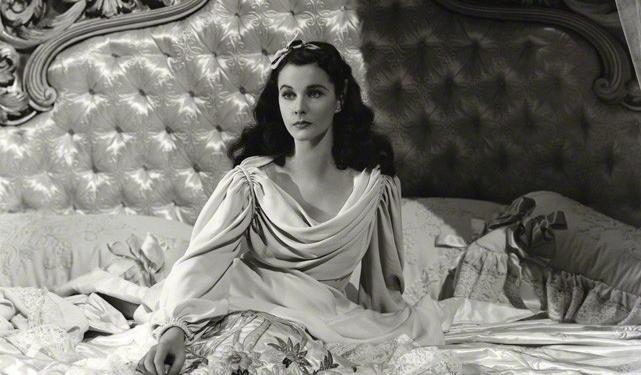
It’s the centenary of Vivien Leigh’s birth. Time then for the National Portrait Gallery to celebrate the wonderful actor most famous for playing Scarlett O’Hara in Gone With The Wind, opposite Clarke Gable, and Blanche DuBois in A Streetcar Named Desire, alongside Marlon Brando. These two roles won Oscars and gained her a place in film history.
The attraction of this exhibition is obvious. Leigh is exquisite in the NPG’s brilliant collection of some 50 portraits and photographs, but at the same time many of her vintage snaps were taken by top mid-century photographers Cecil Beaton, Angus McBean, and Norman Parkinson. The film and theatre world’s main source of publicity was to put out brilliantly conceived studio shots, so there’s a great archive from this golden age, including Parkinson’s sidelong studio portrait taken of Leigh to promote her stage performance in The Mask of Virtue (1935).
This anniversary is a chance to feast anew on Leigh’s image, and you can also find a host of Leigh ephemera at the Victoria and Albert Museum which bought her archive this summer - a heaving catalogue of cuttings, snaps and telegrams. You can of course see the films again as well, with the BFI’s remastered version of Gone With The Wind not to be missed.
Quite why is Vivien Leigh quite so fascinating? From a British background with a dash of Armenian in her ancestry - and born in the India of the Raj – she somehow managed to be both British and exotic at once - an unusual splice. She was also celebrated for her 20-year marriage to Sir Laurence Olivier, as some of the pictures document. This union captivated the columns of the time. They were a top-end Posh-and-Becks of their day, and after their marriage in 1940 they both worked together on the film That Hamilton Woman (1941) about Nelson’s mistress. With a Buckinghamshire seat in ancient Notley Abbey (Bucks) Viv and Larry were the quintessential power couple, hosting poets, politicians and the powerful in medieval splendour.
But beneath this life lay tragedy. Mid-way through the 1940s Leigh began to have depressive episodes: the illness now known as bipolar disorder. It contributed to her break-up with Olivier and in the baleful spirit of the times, Leigh was hospitalised and given electroshock therapy. At the same time, she gained a reputation for promiscuity which, by the mores of the day, damaged her reputation. Even her relationship to ‘Larry’ wasn’t always professionally helpful: critic Ken Tynan reckoned that Leigh brought Olivier down. So when we look at Leigh’s pictures, perhaps we should see (and sympathise with) the germ of vulnerability that makes for a true legend.
Admission: Free
Address and map: St Martin's Pl, London WC2H 0HE
Nearest tube: Charing Cross
| What | Starring Vivien Leigh: A Centenary Celebration, National Portrait Gallery |
| Where | National Portrait Gallery, St Martin's Place, London, WC2H 0HE | MAP |
| When |
30 Nov 13 – 20 Jul 14 |
| Price | |
| Website | Click here for more information |
